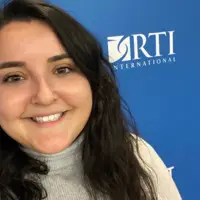Providing training and technical assistance to state agencies seeking to coordinate identification of and responses to child and youth trafficking victims
Identification of child trafficking involves observing multiple indicators of trafficking, which may vary across a wide variety of victims, contexts, and settings. Because children are particularly vulnerable, coordination across youth-serving agencies and disseminating resources related to child trafficking is crucial to identifying survivors, providing appropriate services, and prosecuting their cases.
However, state agencies often face multifaceted challenges in their efforts to collaborate, including differences in policy and organizational mandates, protocols, processes, and timelines; diversity of skills and training; and barriers to information sharing.
To address the need for a more integrated system-level response to child and youth victims of trafficking, the Department of Justice's Office for Victims of Crime (OVC) developed the Improving Outcomes for Child and Youth Victims of Human Trafficking (Improving Outcomes) program in 2016. The program awards funding to grantees, which include state and tribal agencies seeking to develop coordinated strategies to combat child sex and labor trafficking. OVC also funds a training and technical assistance (TTA) provider that provides support and resources to help them achieve these goals.
Providing customized training and technical assistance to agencies combatting child trafficking
RTI has served as the Improving Outcomes TTA provider since 2018 and currently supports 10 grantees. We provide TTA in four primary ways: individual, peer-to-peer, group, and resource development and dissemination. We begin by conducting needs assessments for each grantee to understand their unique strengths, challenges, and goals. We then provide each grantee with an RTI-based Dedicated TA Provider (DTA). The DTA arranges ongoing support based on the grantee's needs as well as emerging issues in the field that DTAs glean from their research, evaluation, and practice-based work.
Individual TTA is tailored to each grantee and includes monthly strategy consultations. Peer-to-peer TTA—consisting of cross-site visits or phone calls and workshops—is particularly valuable, as it promotes problem solving and innovation across grantees working towards similar goals.
We facilitate group TTA by conducting roundtables and webinars. We also host OVC’s annual Improving Outcomes grantee meeting to network and further share lessons learned, best practices, and evidence-informed strategies. We held the first in a planned series of annual meetings in 2022, which was highly successful: 96% of attendees reported learning something new.
Finally, we leverage RTI's expertise in trafficking research and evaluation by developing and disseminating information to help build the capacity of any state or tribe working to strengthen their response to child and youth trafficking. This has included creating and responding to policies, protocols, screening and identification tools, curricula and other training materials, action plan templates, sustainability planning tools, and multimedia content.
Partnering with experts to provide comprehensive support
Our approach is guided by Subject Matter Expert (SME) Partners that have diverse expertise, including runaway, homeless, and tribal youth; case coordination and child advocacy; child welfare and juvenile justice involvement; physical and mental health; language access; and law enforcement. Multiple SME partners also have lived experience of trafficking. These partnerships help us provide TTA that is:
- Evidence-based
- Victim-centered
- Survivor-informed
Grantees developed unique projects with cross-cutting approaches to end child trafficking
Improving Outcomes grantees have developed diverse projects reflecting their unique priorities and assets, such as:
- Conducting needs assessments to determine the needs of a specific population, such as tribal victims of trafficking
- Identifying existing systems and improving coordination of available services that support child and youth victims of trafficking
- Strengthening inter-agency relationships
- Creating or revising state and local policies
- Fostering partnership buy-in and readiness to change
- Educating the public or key stakeholders, such as law enforcement, about child and youth trafficking
Examples include Ohio’s Human Trafficking Screening Tool for Youth and Louisiana's child and youth trafficking collaborative coordinated care referral process.
Learn more about state-based approaches to address child and youth trafficking and RTI's human sex and labor trafficking research.

We have created a publicly available Compendium of Resources that contains grantee-developed materials. While projects are specific to each grantee's local jurisdiction and context, there are many cross-cutting approaches that we hope will be useful for others to review, learn from, and build upon in their own states and communities.
- National Institute of Justice (NIJ)
- U.S. Department of Justice Office for Victims of Crime







